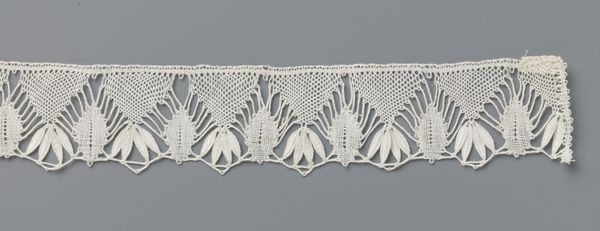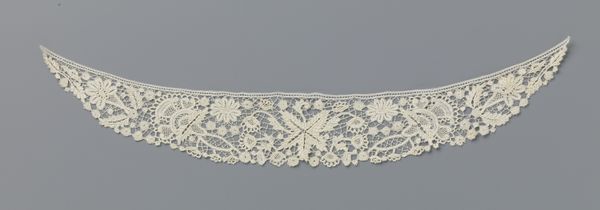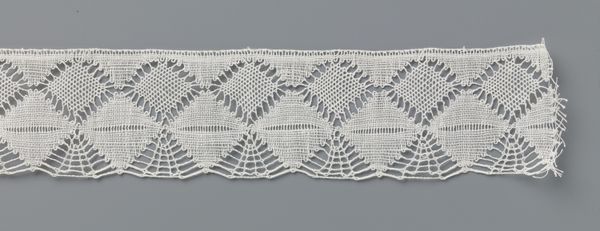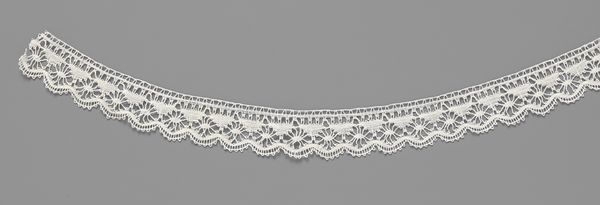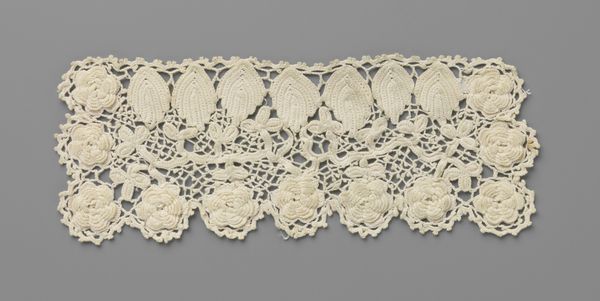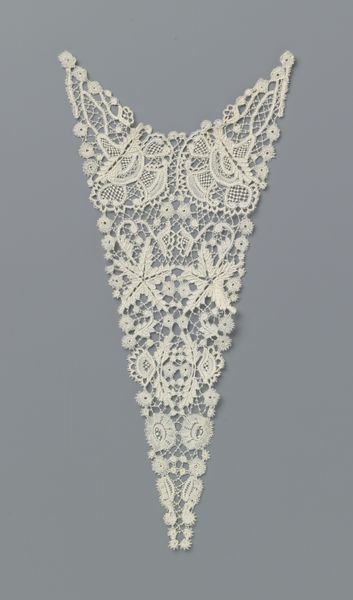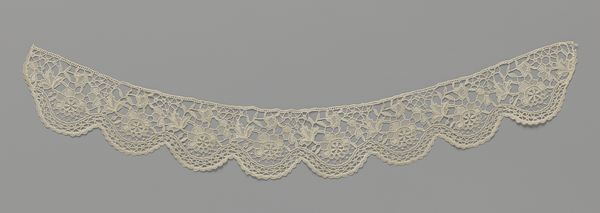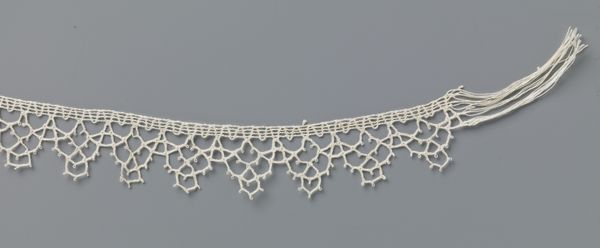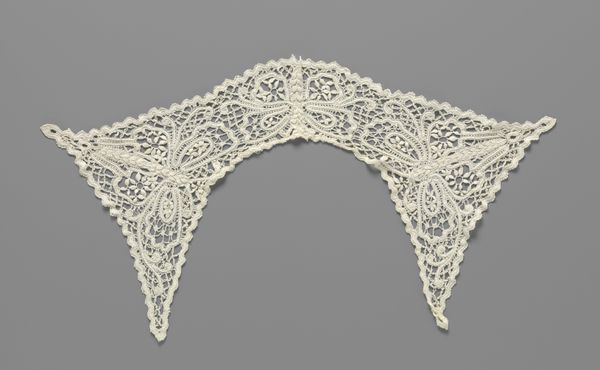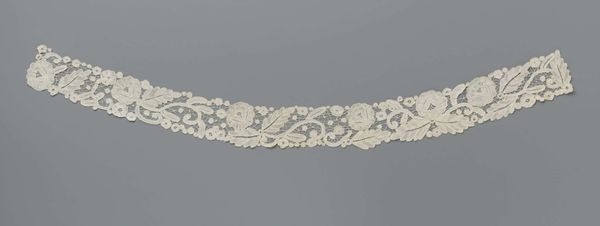
fibre-art, textile
#
natural stone pattern
#
fibre-art
#
textile
#
pattern making
#
hand-embroidered
#
pattern design
#
repetitive shape and pattern
#
intricate pattern
#
regular pattern
#
pattern repetition
#
decorative-art
#
layered pattern
#
combined pattern
Dimensions: length 160 cm, width 1.5 cm, 2.5 cm
Copyright: Rijks Museum: Open Domain
Curator: This is a fascinating piece: a length of bobbin lace, likely from the 1920s, created by the ‘s-Gravenmoersche Kantvereniging. The delicate, repetitive pattern is really striking. What do you make of it? Editor: It’s so intricate! The repeated shell shapes remind me of ocean waves, and the craftsmanship is impressive. I'm curious, what social or historical elements influenced the creation of this particular Zakdoekstrook? Curator: Excellent question. Bobbin lace-making has historically been tied to women's labor. Examining it through a feminist lens, we can consider how these intricate works, often made within the domestic sphere, represent a form of undervalued artistry and economic activity. What kind of stories or status do you think this represented in the 1920's? Editor: I see! The time and skill definitely communicate a status, even if that's separate from economic recognition. Do you see echoes of Art Nouveau in the lace? It’s such a precise symmetry that feels very grounded in natural form. Curator: Definitely. The flowing lines and organic motifs connect it to the Art Nouveau movement. We can think about it within the broader context of the Arts and Crafts movement, too, with its emphasis on handmade objects in resistance to industrialization. This resistance itself makes a social commentary. Editor: So this is about more than just decoration. Curator: Precisely. This seemingly simple textile connects to critical narratives of labor, gender, and artistic movements, challenging traditional hierarchies of art and craft. It's a testament to the quiet power of repetitive, detailed work. What a refreshing contrast it makes! Editor: I hadn’t considered it that way before. Thank you, it’s given me a whole new perspective on the work!
Comments
No comments
Be the first to comment and join the conversation on the ultimate creative platform.
